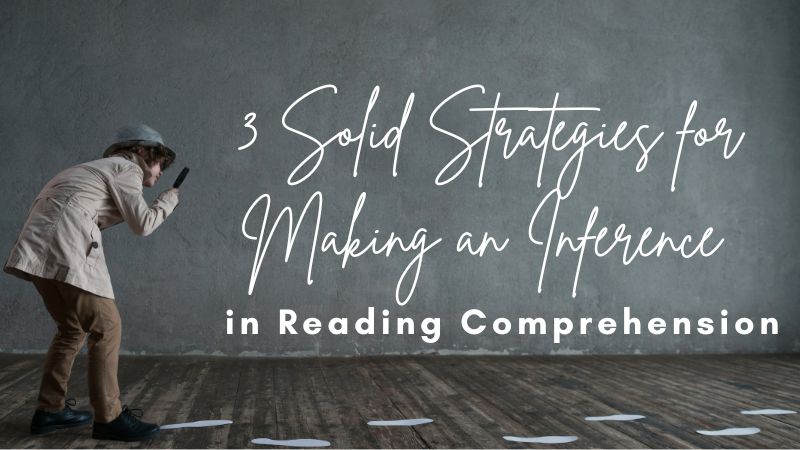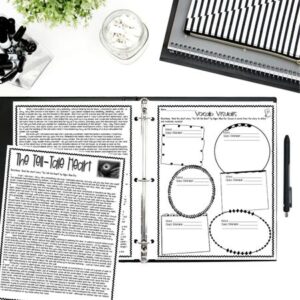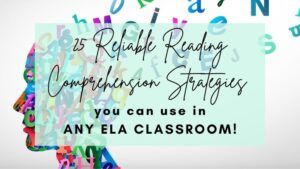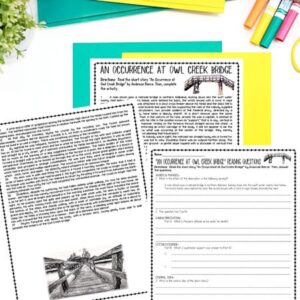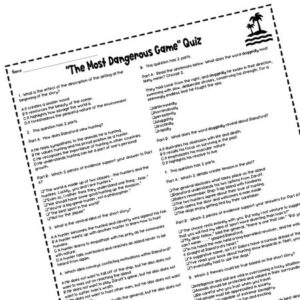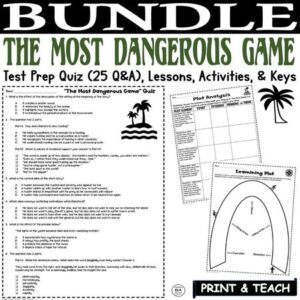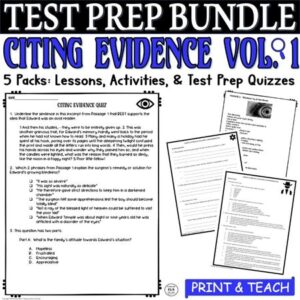Sometimes, I feel like I don’t have a clue. After having 4 children in the last 7 years, my mind just isn’t what it used to be. I don’t easily pick up on what people are trying to tell me half the time. I don’t see any true hints or indications, at least at the time, concerning what a person is trying to tell me without a blunt, clear statement. Many of our students feel the same way when attempting to make an inference in reading comprehension.
Imagine the following as you read a passage or an entire short story and are asked to make an inference in reading comprehension for a typical English Language Arts class:
- During your first reading, you are stumbling over several words in each paragraph. You cannot readily sound them out or you can sound out the words, but you still have no idea what they mean.
- Or the words may be understandable, but the author is using them in a way that is wordy or lengthy. Like you have to breathe 5 times just to get to the end of a single sentence. Try reading Nathaniel Hawthorne’s The Scarlett Letter, and you will understand what I mean.
- Or you don’t have the background knowledge to actually comprehend the implications of the time period, place, major concepts, etc.
Now, the teacher asks you to make an inference in reading comprehension by offering text-based questions…yeah, we would all be frustrated.
If you have ever felt that frustration, keep reading for ideas to help students make an inference in reading comprehension!
Need help with Secondary Reading Test Prep? Check out this FREE Pack of 3 Test Prep Activities to help students achieve success on standardized tests!
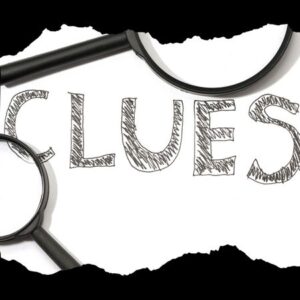
Why is making an inference in reading comprehension so important?
If you have ever had a conversation with anyone, you will quickly realize people are not clear and concise. Often, we repeat, use inconsistent diction, refer to things others may or may not know about, do not understand how to communicate our ideas well, or get hampered by social niceties.
Many times, we have to read between the lines. We are required to analyze clues related to what someone says, does, or doesn’t say to truly comprehend a certain intended message or idea.
Additionally, this process of making an inference in reading comprehension is significant today more than ever. Consider the videos we watch, the media we consume, the books we read, and even the music we listen to. Everything is as clear as mud!
Instead, we must become the Sherlock Holmes of our world, seeking out the diction, tone, context, syntax, and other elements that will lead us to a conclusion about whatever we are reading, viewing, or listening to.
Making an inference in reading comprehension is a process that takes time, patience, and intentionality, so buckle up! I hope these various strategies help!
3 Solid Strategies for Making an Inference in Reading Comprehension
1. Investigate Vocabulary
If your students are reading “The Tell-Tale Heart” by Edgar Allan Poe for the first time, it might be overwhelming, primarily because of the higher-level language in the story. Without understanding a text’s vocabulary, making any inference in reading comprehension can be impossible or difficult at best.
Let’s see Edgar Allan Poe’s classic tale through the eyes of a below-level 9th-grade reader:
True! — nervous — very, very dreadfully nervous I had been and am; but why will you say that I am mad? The disease had sharpened my senses — not destroyed — not dulled them. Above all was the sense of hearing acute. I heard all things in the heaven and in the earth. I heard many things in hell. How, then, am I mad? Hearken! and observe how healthily — how calmly I can tell you the whole story.
Already, I may be overwhelmed with certain words like the following:
- dreadfully
- mad
- disease
- dulled
- acute
- hearken
- observe
I may think I know words like mad, disease, or dulled, but a secondary meaning may be over my head, especially when trying to make an inference in higher-level reading comprehension passages.
- Mad could refer to being angry or crazy.
- A disease could be either physical or mental.
- Dulled could refer to the physical dulling of a blade, a dim bulb, or a lack of intelligence.
If your teacher asks you to make an inference about the character’s mental state, a relatively correct answer may be difficult to surmise simply because of a lack of vocabulary knowledge.
Before attempting to read the story, you may want to spend an entire class period or at the very least the first half of the class analyzing vocabulary.
You can have students pick out words they do not know, you can come up with a predetermined list, or you can offer a mix of both options. Then, it is time to get to work:
- Define the words with your students or have them look the words up.
- Consider having students research definitions for the primary and secondary meanings.
- Instruct students to investigate the various parts of speech as well as roots, prefixes, and suffixes associated with the vocabulary.
- Dig deeply into the connotation and denotation of each word.
- Discover the antonyms and synonyms for the vocabulary words.
- Visualize and create sentences for specific words.
- Provide time for students to share their vocabulary investigations!
I truly wish the process of learning vocabulary was easier and faster, but only time and intentionality will help our students grow and build their own personal lexicons. It will be worth it, however, as you will start to see students more easily make an inference in reading comprehension over time!
Check out 25 Reliable Reading Comprehension Strategies for more teaching ideas!
2. Provide Background Knowledge
One of my favorite short stories to teach is Ambrose Bierce’s “An Occurrence at Owl Creek Bridge.” This story of a Civil War civilian attempting to foil the Northern Army is not too hard to read and comprehend, that is if you know the history behind the story.
The Civil War is a time we should all acknowledge as important in United States History. Without it, we would be an entirely different country today. Unfortunately, there are many students who know little of this time period.
Let’s read one of the first paragraphs of this short story:
The man who was engaged in being hanged was apparently about thirty-five years of age. He was a civilian, if one might judge from his habit, which was that of a planter. His features were good–a straight nose, firm mouth, broad forehead, from which his long, dark hair was combed straight back, falling behind his ears to the collar of his well-fitting frock coat.
He wore a mustache and pointed beard, but no whiskers; his eyes were large and dark gray, and had a kindly expression which one would hardly have expected in one whose neck was in the hemp. Evidently, this was no vulgar assassin. The liberal military code makes provision for hanging many kinds of persons, and gentlemen are not excluded.
If you consider the last sentence alone and make an inference in reading comprehension concerning the protagonist, you might struggle to understand what the author intends.
“Gentlemen” refers to Southern gentlemen, in this case, a plantation owner who is not directly fighting as a Confederate soldier.
A historically correct video covering major ideas in the Civil War would be incredibly helpful before reading this short story. Additionally, teaching texts in thematic units or period-era units will aid greatly in increasing your students’ overall ability to make an inference in reading comprehension.
For example, if you are teaching a mini-unit on the Civil War, why not read the Gettysburg Address, excerpts from The Red Badge of Courage, An Occurrence at Owl Creek Bridge, and the song When Johnny Comes Marching Home Again?
By using thematic units, you can help students make connections and develop their background knowledge, which will ultimately help as they are asked to make an inference in reading comprehension!
Want lessons to help you break down and teach An Occurrence at Owl Creek Bridge? Click HERE!
3. Reread & Annotate Purposefully
It never ceases to amaze me that students believe they should understand everything on the first reading. When asking students to make an inference in reading comprehension, we need to teach students that it is okay to reread a paragraph, an excerpt, or even a whole page!
Good readers reread ALL of the time! In fact, even as I write this post, I am consistently rereading what I produce!
Below is the resolution of the classic short story “The Most Dangerous Game” by Richard Connell:
There was a little moonlight, so, before turning on his light, he went to the window and looked down at the courtyard. He could see the great hounds, and he called, “Better luck another time,” to them. Then he switched on the light.
A man, who had been hiding in the curtains of the bed, was standing there.
“Rainsford!” screamed the general. “How in God’s name did you get here?”
“Swam,” said Rainsford. “I found it quicker than walking through the jungle.”
The general sucked in his breath and smiled. “I congratulate you,” he said. “You have won the game.”
Rainsford did not smile. “I am still a beast at bay,” he said, in a low, hoarse voice. “Get ready, General Zaroff.”
The general made one of his deepest bows. “I see,” he said. “Splendid! One of us is to furnish a repast for the hounds. The other will sleep in this very excellent bed. On guard, Rainsford.” . . .
He had never slept in a better bed, Rainsford decided.
Here are several questions about making an inference in reading comprehension for “The Most Dangerous Game” by Richard Connell:
- What happens to General Zaroff at the end of the story? Use textual evidence to support your ideas.
- How does Rainsford feel at the end of the story? How do we know this? Explain.
- Based on what happens earlier in the story, what does Rainsford mean when he says, “I found it quicker than walking through the jungle.” Include evidence to support your assertions.
To ensure your students are successful, go step by step and model how to make an inference in reading comprehension. First, walk students through what the question is asking. Then, reread and locate any evidence that could relate to the meaning. Lastly, break down the meaning of the evidence. What clues am I given to help me understand what the author is trying to say?
- What happens to General Zaroff at the end of the story? Use evidence to support your ideas. Rainsford is sleeping in the bed, so Zaroff has lost and is a “repast” or food for the “hounds” or dogs. We may have to look up the definitions of certain words to fully grasp the inference.
- How does Rainsford feel at the end of the story? How do we know this? In the end, Rainsford is sleeping in the bed and describes that he has “never slept in a better bed.” We can infer based on the words “never” and “better” that he is enjoying his reward for winning.
- Based on what happens earlier in the story, what does Rainsford mean when he says, “I found it quicker than walking through the jungle.” Although he says this, he does not actually mean that the swim was quicker. In reality, he had to jump into the ocean to avoid death. We know this by rereading the paragraphs in the falling action. He is being somewhat sarcastic here as swimming is not usually faster than walking.
We don’t want our students to summarize a sentence or excerpt; we want them to make an inference in reading comprehension question responses. It will take time, lots of practice, and tons of rereading and annotating. And that is okay!
Click below to get easy-to-teach resources to make teaching The Most Dangerous Game a breeze!
CITING EVIDENCE & MAKING AN INFERENCE IN READING COMPREHENSION RESOURCE
Want a week’s worth of READY-MADE, EASY-TO-TEACH worksheets for high school reading comprehension, so you can make preparing for standardized tests a piece of cake? This Reading Comprehension Passages and Questions Test Prep CITING EVIDENCE & MAKING AN INFERENCE in reading comprehension Lesson BUNDLE prepares high school and middle school students for state reading comprehension exams and assessments with informational texts, literary texts, and paired passages!
This resource includes 5 EASY-TO-TEACH Lessons with Worksheets, Activities, Writing Responses, and Common Core Style Test Prep QUESTIONS and ANSWERS to prepare students to cite evidence and make an inference in reading comprehension!
Give yourself a breath of fresh air with this NO PREP curriculum that integrates test prep within the teaching of literature!
Just PRINT and TEACH with assignments that incorporate making an inference in reading comprehension!
Need more help with test prep that contains making an inference in reading comprehension skills? Check out my store Kristin Menke-Integrated ELA Test Prep!

